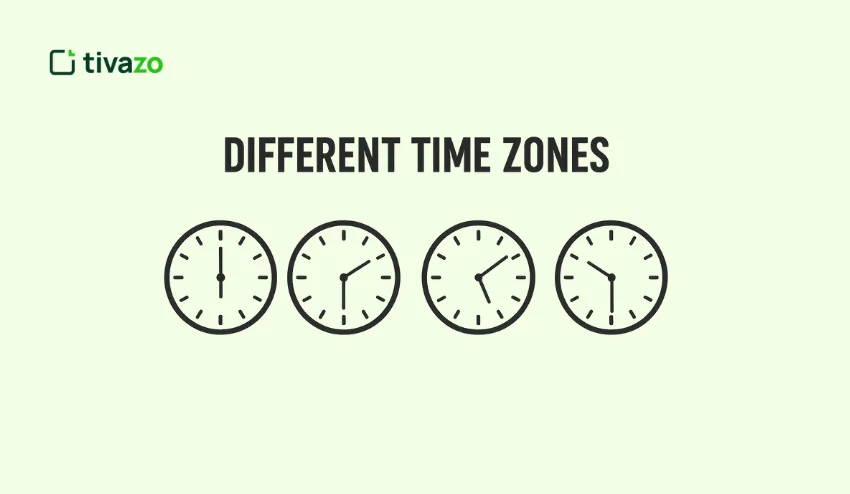In this demanding and fast-paced world, when we feel in a frenzy of connectedness at all times, time is our most precious and scarce resource. There are constant notifications, back-to-back meetings, imminent deadlines, and the to-do list can feel almost infinite. It can be overwhelming, and one could easily feel that you are always trying to catch up.
No matter if you are a professional managing multiple projects, a manager in charge of a team, or just a person trying to manage your career and personal life, the demands on your time can become overwhelming. It is inevitable that, without a properly structured time management plan, you will encounter stress, miss a deadline, lose focus, or potentially burn out.
The good news is that a lot of this can be avoided by not working harder but working wiser. There is a way to put a solid time management plan in place, give you back control of your day, reclaim your focus, reduce the stress, and allow you to achieve your goals with more regularity. No one is trying to be busy all the time, but rather productive with purpose, and a well-thought-out time management plan is the foundation for that shift.
Key Takeaways:
- What Is a Time Management Plan?
- Consequences of Poor Time Management
- Actionable Steps to Build a Time Management Plan That Works
- Final Thought
- FAQs
What Is a Time Management Plan?
As the name indicates, a time management plan is a way of establishing a plan to organize all the activities being done and planned, as well as prioritize and allocate time to those tasks and responsibilities, in a manner that meets certain priorities and goals. A time management plan allows individuals to be aware of how they are spending their hours, consciously make decisions about where to invest their time, and develop a plan of action that will ultimately allow them to do more in life with less stress.
An effective time management plan will lead you to allow your daily activities to be in alignment with your overall personal and professional goals. Rather than waiting to reactively determine what you will focus on for the day, an effective time management plan will allow you to be informed and proactive in scheduling your work, break time, and leisure time, so you can work smarter, not harder.
Benefits of a Time Management Plan
- Better Focus: Knowing what you are going to work on and when minimizes the overwhelm.
- Better Decision Making: A time management plan helps to prevent the scramble of last-minute decisions and poor choices.
- Less Stress: Allocating time allows for intentional activity instead of leading to burnout and exhaustion.
- Steady Progress: Planning out work in chunks of time produces more consistent and steady results.

Consequences of Poor Time Management
It’s important to recognize the cost of not managing your time effectively, prior to discussing how to build an effective time management plan. The consequences of poor time management are significant, affecting your ability to create with productivity and work at your optimum level.

- Physical & Mental Burnout and Stress: When the tasks accumulate and deadlines in a short timeframe appear, stress levels heighten which makes it harder to focus or think clearly. Chronic stress can cause burnout and adversely affects the quality of your mental and physical health.
- Deadlines Are Missed and Unreliable Reputation: Not managing your time effectively means deadlines are missed, projects are delayed and coworkers or clients are beginning to doubt your reliability.
- Poor Quality and rushed work: Last minute rush jobs compromise the quality of your work because you have less time to review and to think about and execute your work.
- Disrupted sleep and poor work-life balance: Without any boundaries work space continues to invade your personal time, which affects your sleep, your relationships and your total enjoyment of life.
Understanding the consequences of poor time management highlights the importance of developing an effective time management plan.
10 Actionable Steps to Build a Time Management Plan That Works
Now that you understand what a time management plan is and why it is essential, let’s look at 10 straightforward steps to develop a time management plan customized to satisfy your specific needs and give you the power to make the best use of your time during your week.

Step 1: Monitor & Analyze Your Time
The first step in time management is knowing how you currently spend your time. Most people think they know where their time is spent, but it is nothing more than a guess until you have data.
- Employ the services of time tracking software like Tivazo, Hubstaff, Clockify, or Toggl to track and log your activities throughout the workday.
- If software is not your thing, you can manually track your time using pen and paper in a notebook or using a spreadsheet.
- Track everything: work tasks, meetings, breaks, distractions, and free time.
- At the end of each week, analyze your log to spot time drains and productivity blockers—those activities that waste your time or cause you to lose your focus.
Once you analyze your time, you will be able to make informed decisions and pinpoint which areas to target in improving your time management.
Step 2: Set SMART Weekly Goals
Setting clear and specific goals is a critical component of any time management strategy. While it is a tempting claim, saying “I want to be more productive” does not really give you anything to act on. You will also want to think about each goal in terms of the SMART framework:
- Specific: What do you want to accomplish?
- Measurable: What metrics can help you track progress?
- Achievable: Is the goal realistic and attainable?
- Relevant: How do goals align with your bigger picture?
- Time-bound: When do you want to accomplish this?
For example. "Complete and submit 3 client reports by Friday" instead of "Finish reports."
Creating SMART weekly goals will keep you focused and motivated to complete the necessary work.
Step 3: Build a Time Budget
Imagine your week is a budget — with only so many hours you can spend on work, you want to figure out what expenditures make the most sense in your time budget. For this, you can:
- Segment your work week into categories. For example, deep work, meetings, admin work, breaks, learning, etc.
- Leverage a tool or spreadsheet to assign an hour value to those categories and see where you can improve.
- Leave time unstructured in your schedule to account for the various urgent issues that will arise in your week that you weren’t expecting.
You do not want to waste your effort on the wrong priorities, and a time budget can help draw discovery or insight to your productivity vs. recovery.
Step 4: Prioritize Using the Eisenhower Matrix
The importance of prioritization is vital to effectively managing your workload. The Eisenhower Matrix provides four quadrants of classification of work:
- Urgent and Important – You do it right away.
- Important but Not Urgent – You schedule for a later time.
- Urgent but Not Important – You will delegate to someone else if possible.
- Neither Urgent nor Important – You will eliminate or postpone for a later time.
Prioritization task not only helps you focus on what matters most, but also allow you to mitigate decision fatigue by having fewer choices on what you will focus on.
Step 5: Time block your week
Time blocking is dividing your calendar into different blocks based on specific activities.
- Deep work blocks should happen during your peak energy times.
- Make sure to block out time for meetings, checking emails, and administrative tasks.
- Include blocks for creative time or brainstorming time.
- Make sure to block out time for breaks and rest.
Make use of platforms such as Google Calendar, Outlook, or Notion to help visualize your calendar and stick to your time blocks.
Step 6: Automate Repetitive Actions
Automation is one of the easiest ways to save time.
- Use software and AI tools to take photos and speed up the action of scheduling meetings, sending reminders, and generating reports, etc.
- Automation platforms such as Zapier or Microsoft Power Automate, or even an email filter, can save you hours each week.
- Automating the mundane work allows us to focus on more high-value activities.
Step 7: Plan your breaks & your downtime
As a rule of thumb, you should not work long hours without breaks, as this fatigues the brain.
- Insert a few micro-breaks of 5-10 minutes each hour.
- Plan longer breaks for meals and getting away from your desk.
- Consider using cyclical techniques like the Pomodoro method (25 minutes of work, 5 minutes of downtime, etc.) to help train you to stay focused.
Planning downtime helps prevent burnout while keeping your mind focused.
Step 8: Assess and Adjust Weekly
Your time management plan does not need to remain the same, you will need to assess your progress when planning.
- Weekly, assess what is going well or poorly at the end of the week.
- Adjust your goals, time budget, and priorities based on what your outcome and result were.
- Consider using a reflection template or journaling what your reflections were.
This continuous flow assessment is the way to get better at managing time.
Step 9: Invest in Productivity Tools
Utilizing tool sets will help you manufacture execution of your plan more easily.
- Consider software such as Tivazo for time tracking, Trello or Asana for task management, Notion for note-taking and planning, and Clockify for full reports.
- Choose tools that suit your own workflow and your team’s collaboration styles.
- Review if your tools are facilitating or inhibiting performance and productivity regularly.
Step 10: Commit to Continuous Improvement
Life Performance & Time Management is a skill that is developed over time.
- Be patient, and celebrate your small wins.
- Keep track of your progress on a monthly basis, and pay attention to your trends.
- Read a few books and attend a few workshops, and receive coaching about productivity.
- Remember that mastery is a byproduct of repeated practice and reflecting on the process.
Final Thought
An effective time management plan is much more than just a tool: it can change your effectiveness, help you focus better, and better balance your working life and your personal life. In today’s world of distractions and competing demands for your time, having a clear plan that advises you about how to manage your time can help you stay in front and not behind.
As you practice the 10 practical steps this series has suggested – tracking your time, developing SMART goals, prioritizing your work, blocking time in your day to work on tasks, and making time for breaks and review – you will continue to feel greater control over your time. Rather than being governed by urgency and reactive decision-making, you are purposeful and empowered by your schedule.
You don’t have to do everything at once. Start with one or two changes this week, and incorporate them into your daily practice. With regular practice and conscious changes, your time management plans will evolve into a structure that sustains your life and allows you to function at your best.
Over time, managing your time effectively will become second nature, helping you achieve both personal and professional goals with less stress and far more satisfaction.




